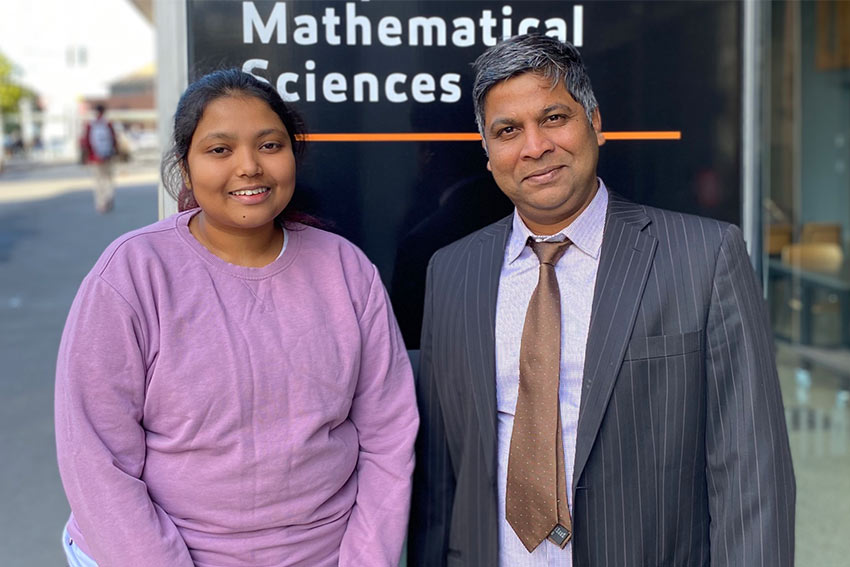IIT Madras intern at AUT

Over the last fortnight, Bindushree Basavanna, a Bachelor of Technology - Aerospace Engineering student at Indian Institute of Technology, Madras, has been interning at AUT’s School of Engineering, Computer and Mathematical Sciences.
During the internship, the 21-year-old student from North Bangalore is writing a machine learning code for predicting cutting force for machining titanium alloy.
The project, and Bindushree’s internship, is part of a Memorandum of Understanding (MoU) between AUT and IIT Madras enabling students to visit the university for research collaborations.
Bindushree says she is passionate about machine learning, and that understanding AI is an important skill for anyone considering a career in engineering.
“Machine learning techniques have revolutionized various industries, and manufacturing is one of them – their algorithms are increasingly being employed in manufacturing processes to optimize efficiency, improve quality, and enhance overall productivity,” she says.
“Through the analysis of large volumes of data collected from sensors, machines, and production lines, machine learning algorithms can identify patterns, correlations, and trends that lead to obtaining improved accuracy, reduced downtime, and enhanced predictive maintenance.
“In this research internship, I am writing a machine learning code for predicting cutting force during machining of titanium alloy for a given set of cutting parameters such as feed rate, cutting speed, depth of cut and with coolant on or off as input,” Bindushree says.
Dr Ashwin Polishetty, a senior lecturer at AUT’s School of Engineering, Computer and Mathematical Sciences, is supervising Bindushree on the project.
Dr Polishetty, who teaches and researches advance manufacturing and additive manufacturing, composed the research proposal, and says Bindushree has access to all AUT resources and facilities needed to complete the project.
He says the code Bindushree is writing is an ANN (Artificial Neural Network) that uses Keras and TensorFlow for building the model.
“The model consists of one input layer, two hidden layers and an output layer. Using this code, Bindushree can predict cutting force for any set of inputs,” Dr Polishetty says.
The pair hope the outcomes of the research lead to further exploration of algorithms generated through AI as a starting point for future projects for manufacturing data.
It’s one of the first projects of its kind in applying a research problem using AI to predict the machinability factors and the thermos-mechanical reactions between the cutting tool and workpiece.
AUT’s Pro Vice-Chancellor International and the Dean of the Faculty of Design and Creative Technologies, Professor Guy Littlefair, says the university’s MoU with IIT Madras is an important one.
“AUT has a longstanding relationship with India, with a recent focus on strengthening these alliances with top tier universities, like IIT Madras.
“Signed in 2020, the MoU details initiatives including, study tours, internships, research collaborations and joint doctoral programmes,” Professor Littlefair says.
"This relationship provides unique opportunities for AUT and IIT Madras and strengthens the profile of both institutions. Focussing outcomes on the student experience and staff development opportunities is the hallmark of this key relationship.”